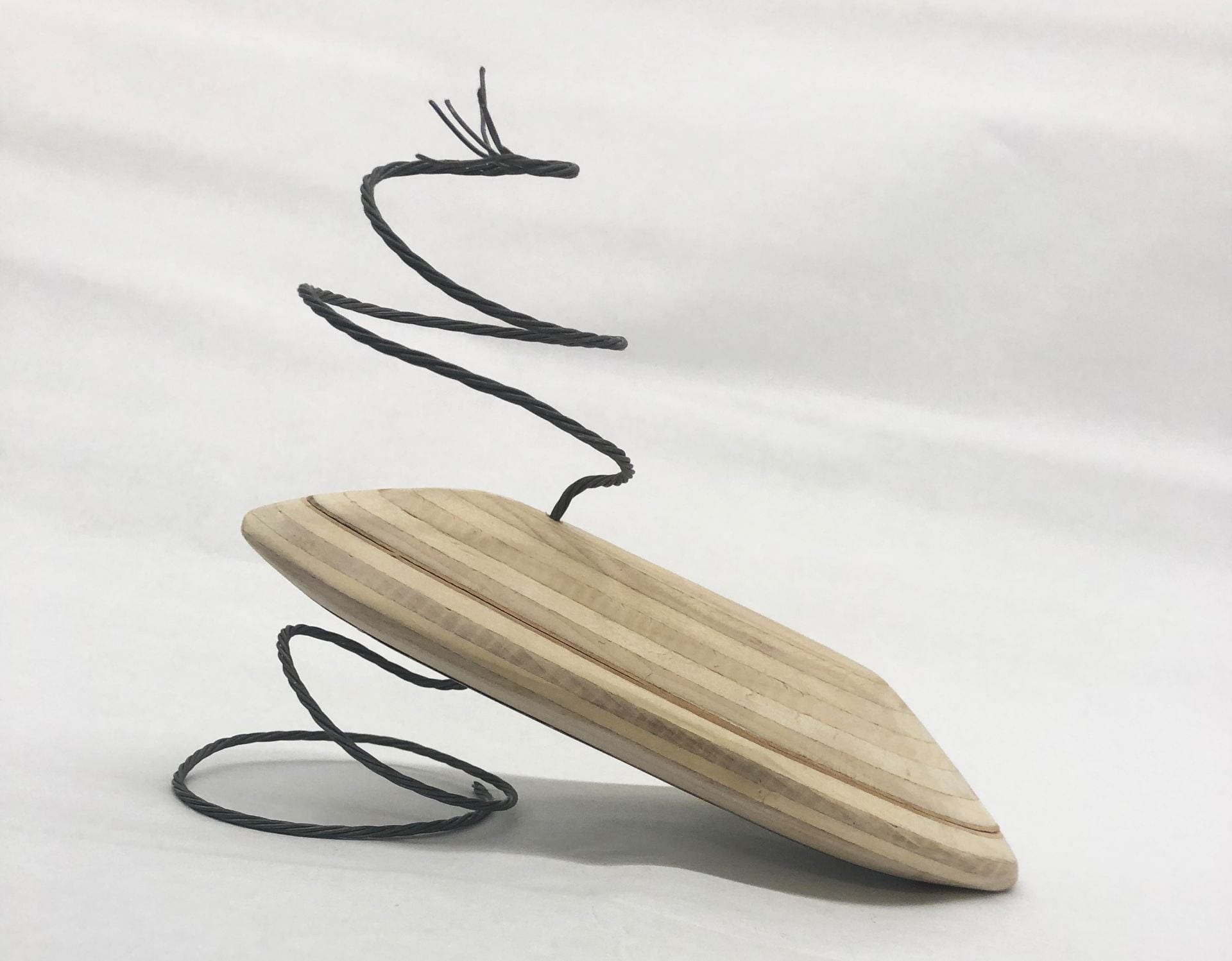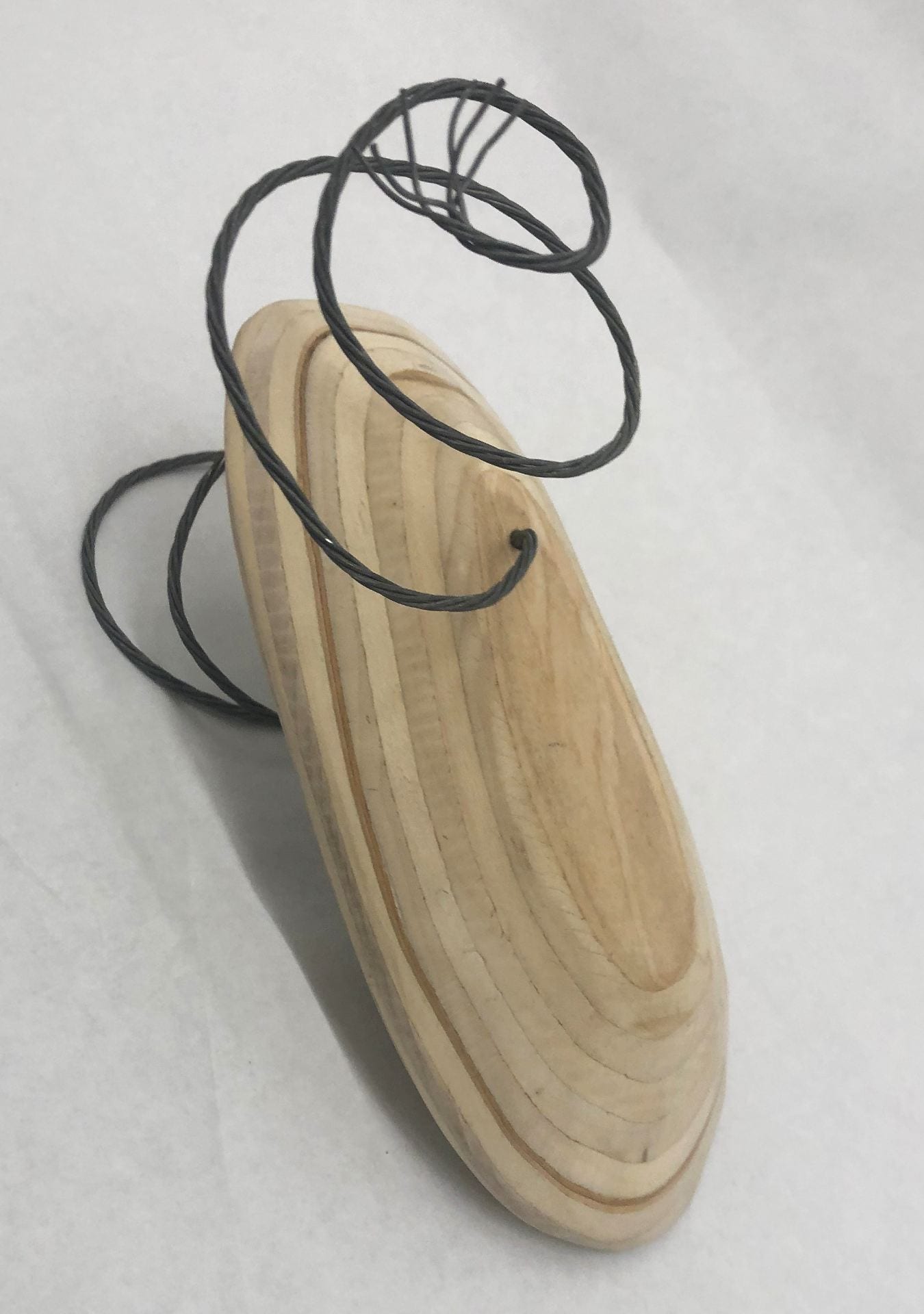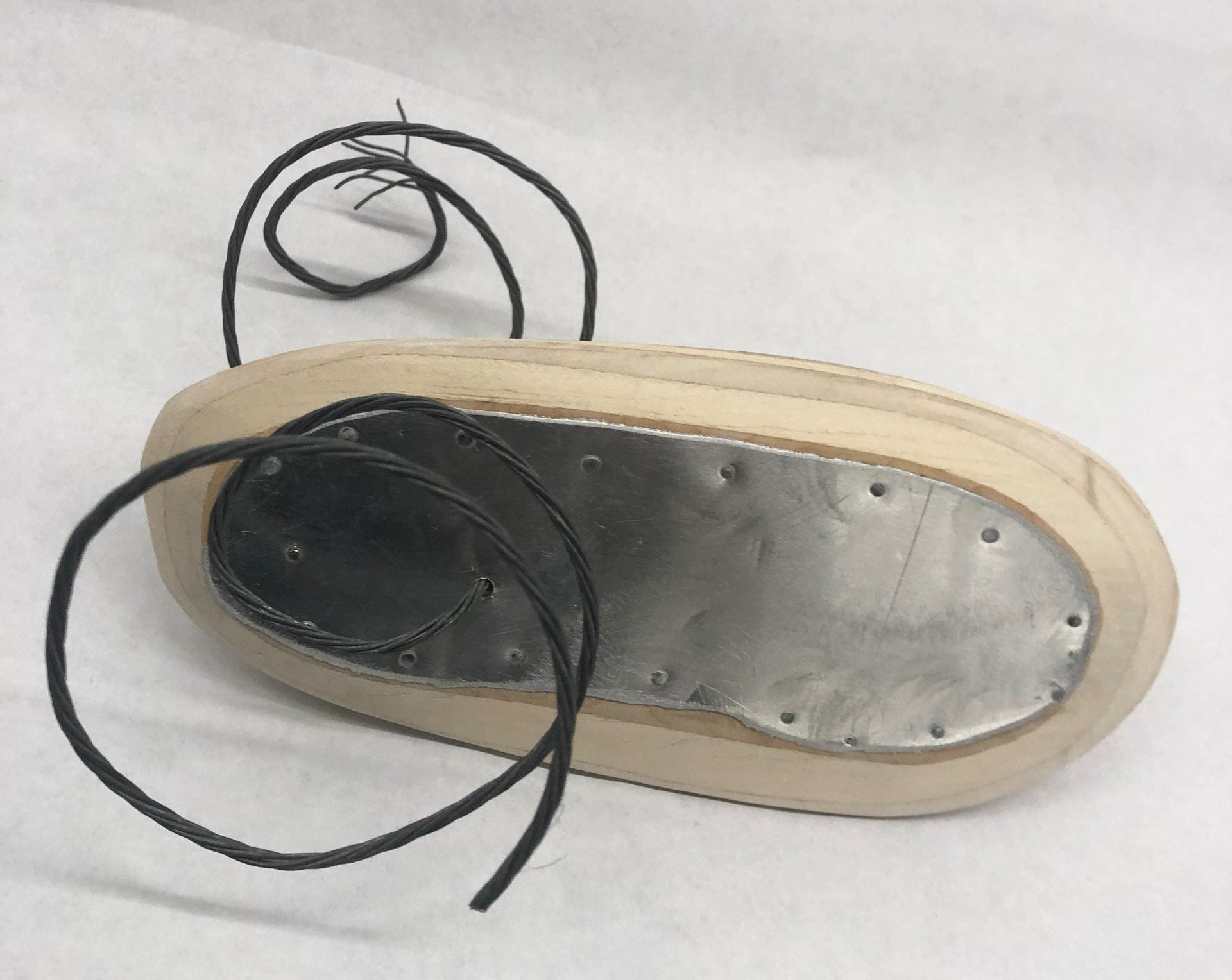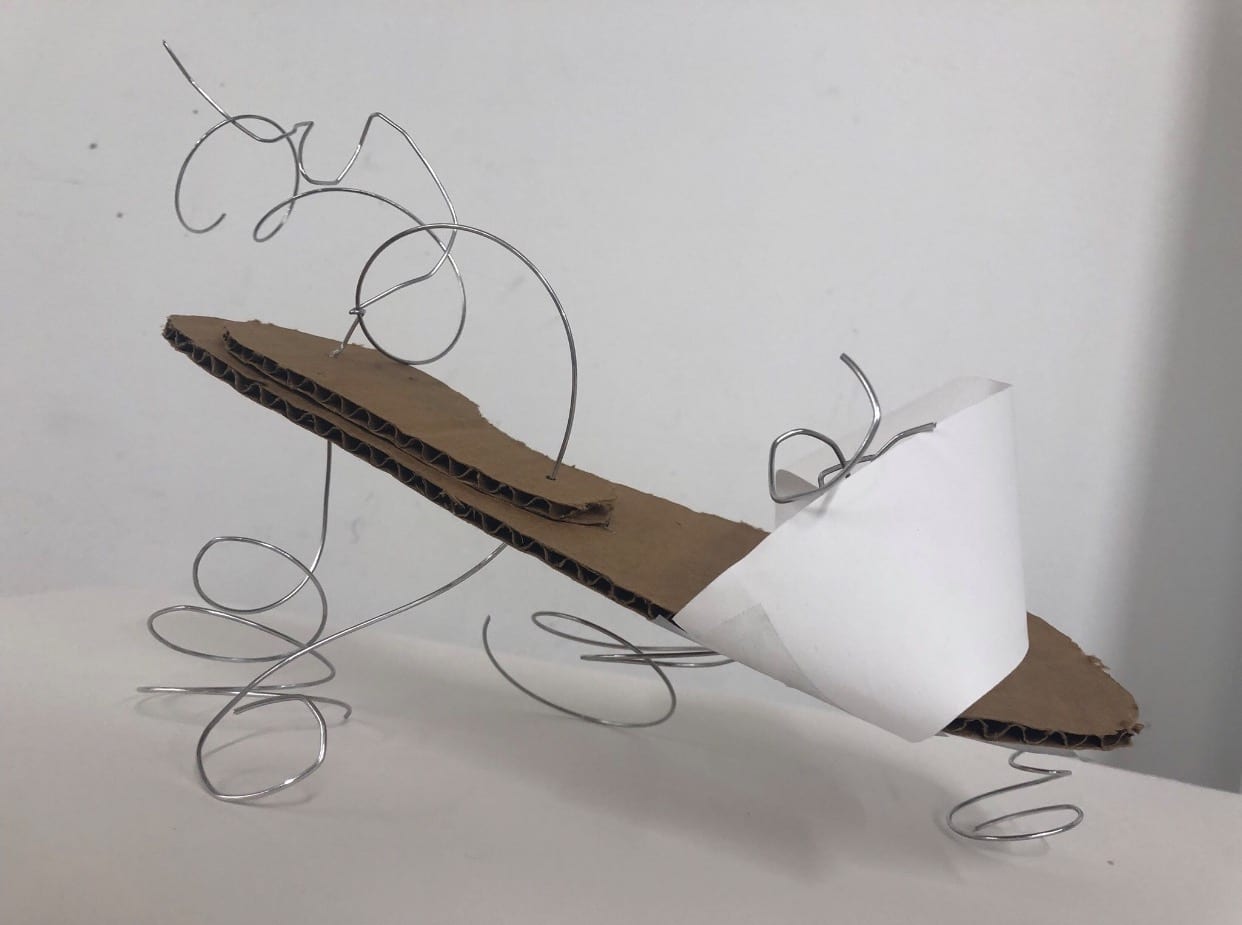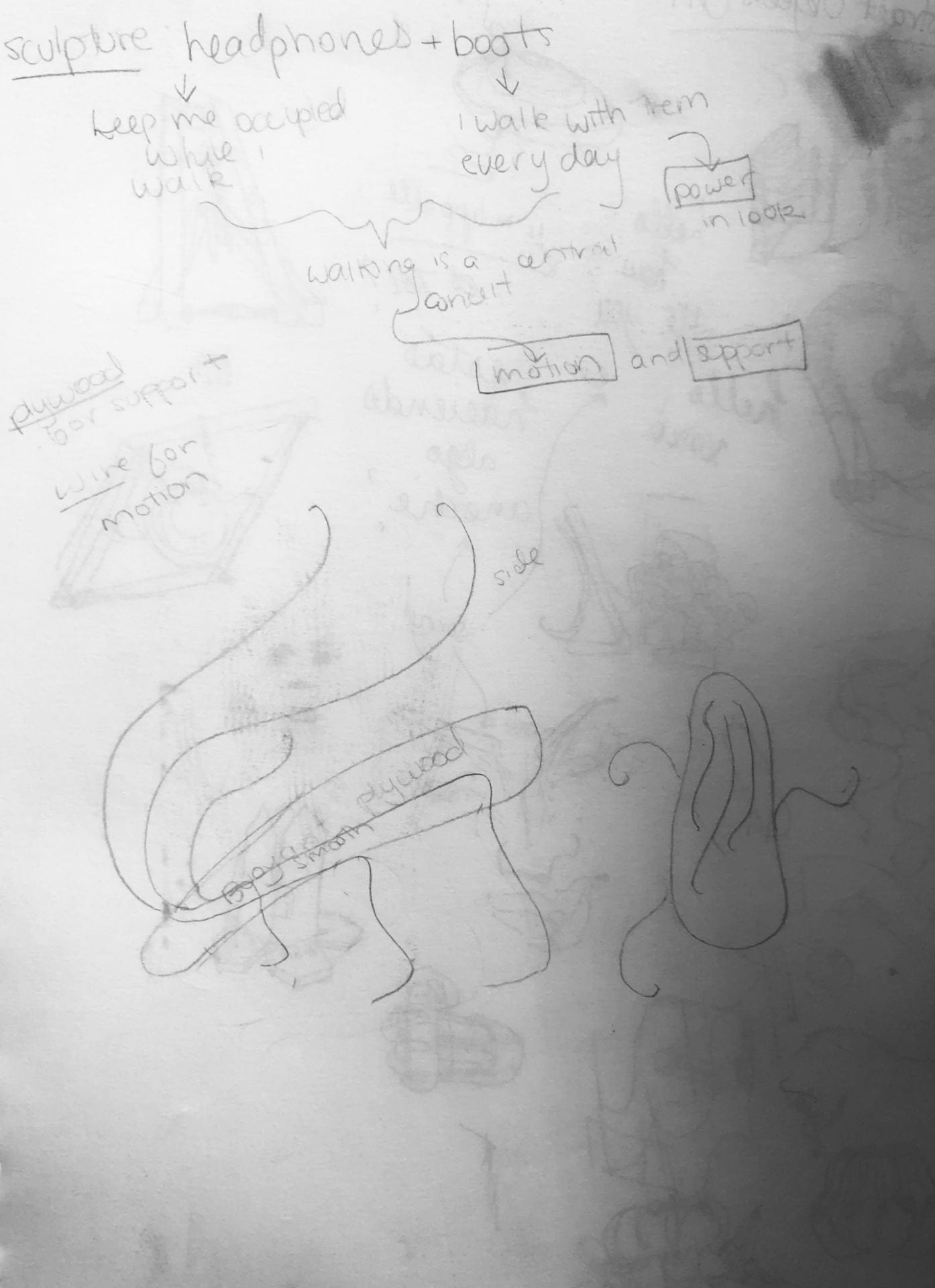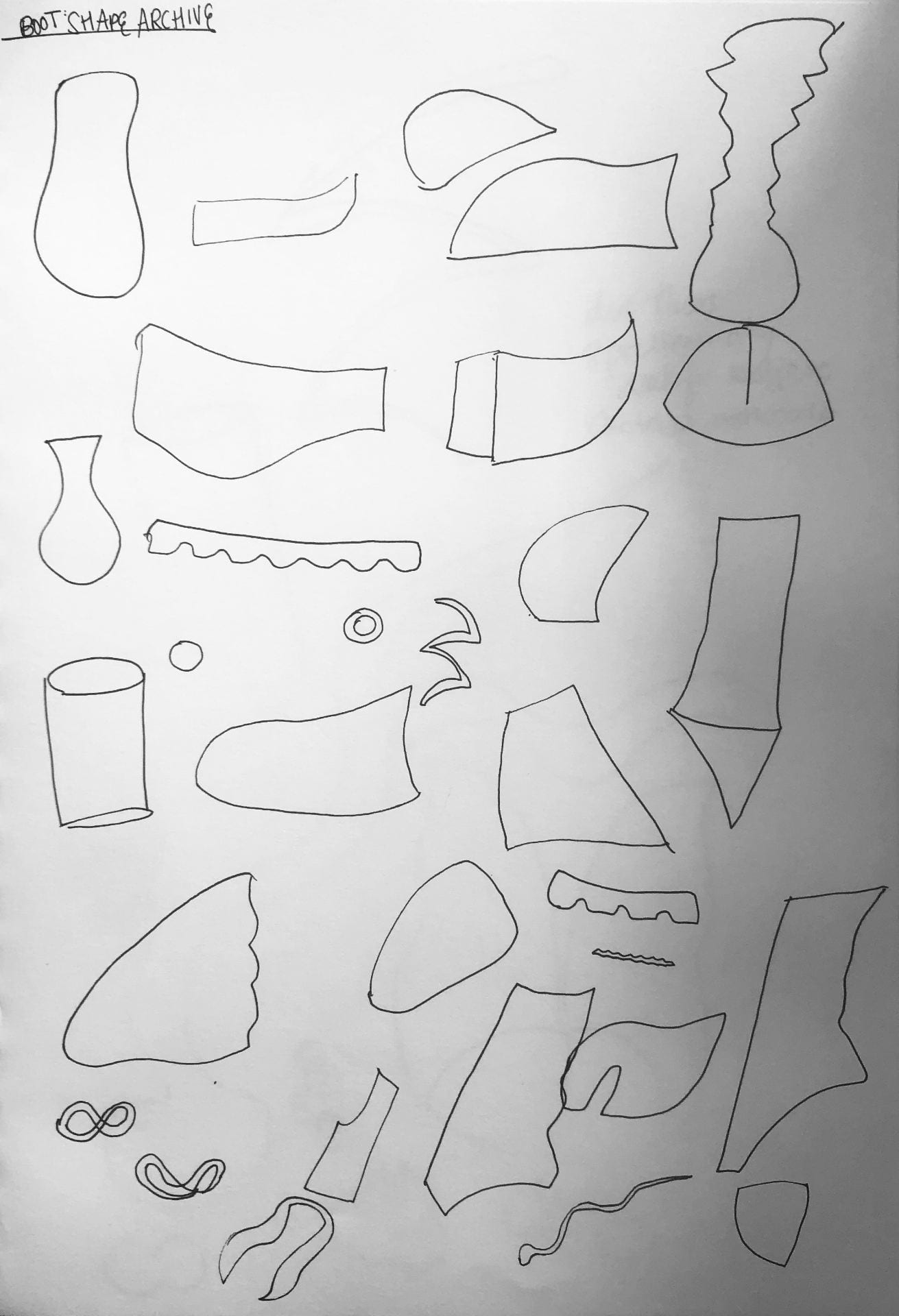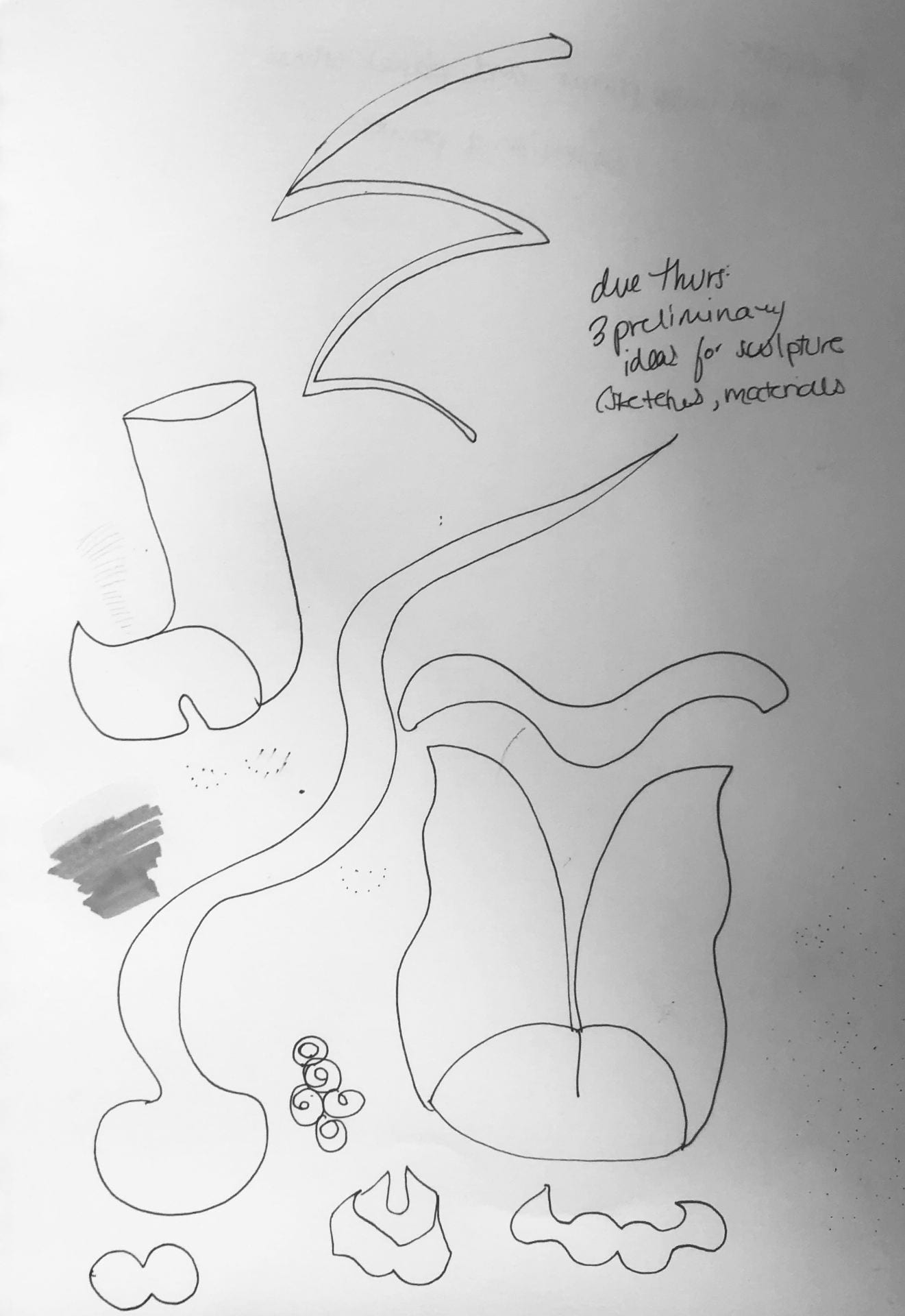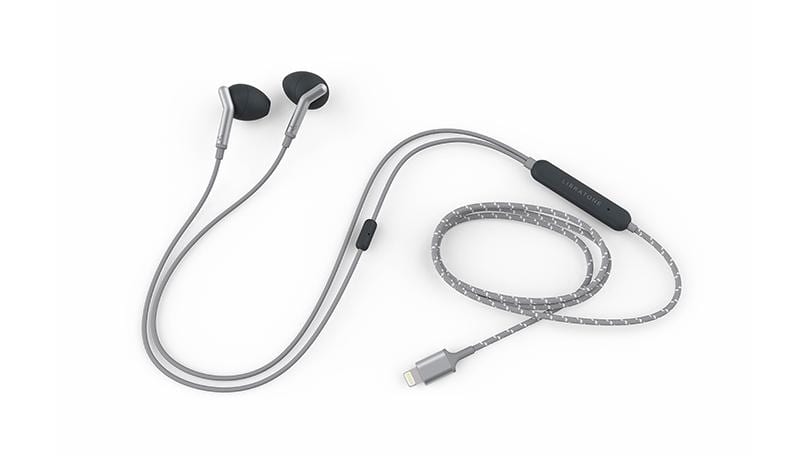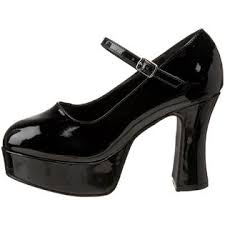Images
Image 1: Whole object with not much extra space around it, from it’s best angle.
Image 2: Whole object from another angle that gives different visual information.
Image 3: A detail of a joint or connection that is especially well-crafted.
Image 4: Prototype.
Image 5+: Preliminary ideas.
Images 6-7: The 2 most relevant pages of your formal features archive.
Images 8 & 9: The cultural object(s) you referenced to develop your project.
Reflective Writing
1. Description:
My piece consists of two pieces of plywood joined one on top of the other via tight dowel joints, that were then cut, filed, and finely sanded until they blended seamlessly into each other and formed a round, entirely smooth and soft oblong shape. It is about 8 inches in length and similar in height. A single wire made of several intertwined wires runs through the anterior half of the form, forming a lifted foot of spiraled wire at the bottom and an extending “wing” of wire growing out like smoke through the top. A cut and filed sheet of aluminum attached with small nails covers the base of the wood and conforms to its shape, seemingly invisible without closer inspection.
2. Cultural Objects & 3. Materials:
The objects that I have chosen for my sculpture project are my Apple headphones and my platform combat boots. I use both every day while walking: the headphones to keep me occupied to mentally engage me for a long walk, and the boots provide me the physical capacity to actually perform the act of walking for any extended amount of time. As a New Yorker and a broke college student, my world is kind of limited by how far I can walk (or subway), so walking is a major part of my personal culture. The objects also hold other cultural significance to me, representing things like the music I listen to and my personal style, but I wanted to focus on the idea of walking and the significance it has to my cultural identity for this project. The oblong of plywood itself represents its buoyancy and the “spring in my step” my items give me, as well as the literal platform that they give me to walk: even though it seems like the platform boots would weigh me down or the headphones would entangle me, they give me motion. This wooden shape is covered at the base with sheet metal that represents its underlying strength, and is supported by entwined, curling wires that support it from the bottom and then pierce through and seem to float away at the top, the lines of the wires representing both the components of the headphones as well as the lines of a treble clef. Their form in shape represents the flow of the music they play and the shape of the headphones as they tangle when I walk, but also function as a support to the platform because although I could physically walk a long distance, I never have the capacity or drive to unless I can listen to music. The curvedness and motion in all the shapes in the piece give a sense of movement to it, which harkens back to the original uniting factor of walking.
For my materials, I used plywood and wire that was given to me by my mother out of her untouched old studio, an aluminum sheet that was generously supplied by a friend, and a dowel that I purchased at Blick for an astoundingly low price that I could not find secondhand. Besides their symbolic applications discussed above, the gifted materials added a level of the culture of the people I surround myself with and made the piece more personal. The choice to use as many secondhand materials as possible reflects my socioeconomic cultural standing as well as my environmentalist views, a culture I actively partake in and study.
4. Process:
To construct my piece, I initially sketched the rough shape I wanted onto a piece of plywood and then the smaller top piece accordingly, and then cut these shapes out with first a large bandsaw, and then a small one for refined curves. I then sketched in the locations of my dowel joints and used a cordless drill to make bore holes in the bottom and top pieces that would fit the dowel bits, which I cut with a coping saw. I malleted the pieces together to ensure the connections and overlaps were as I wanted, and although I took them apart a couple times during the preliminary sanding processes, they stayed joined for the majority of the later time for a truly seamless blend between was was originally two jagged and separate planks. I then sanded and filed these pieces a bit separately to make them easier to handle.
I tested several methods to remove the materials to begin creating a rounded shape, marking lines of how much material I’d need to ideally remove for the blend I wanted to achieve and experimenting with chiseling, hand filing, and sandpaper, as well as doing preliminary material removal with the small bandsaw. After realizing that I needed heavier machinery and a better range of motion, I consulted with the shop techs who pointed me in the direction of the belt sander. I first used this for much of the shaping process, and then the spiral sander to refine it a bit. From there, I used sandpaper and filing to smooth out the shape, and then a circular hand sanding machine for a truly smooth finish.
Once my wood piece was done, I traced the shape of the bottom of it onto my aluminum sheet and cut it out with large and then small metal shears. Once I had this shape, I hammered it into the bottom with small nails and smoothed the edges down with a hand file, hammer, and improvised burnisher from a half round file, experimenting with several methods.
Finally, I used a cordless drill to bore a hole through this object and inserted my wire through the piece, which was shaped by hand and with needle nose pliers.
5. The Artifact in Space:
My artifact defines its space as all objects do with the positive space it occupies, but the open-ended extension of wire also calls attention to the way that negative space surrounds it, and the way that the object could transition from positive to negative space like smoke dissipating into air. The upper wire also serves to divide negative space as it cuts through it, seemingly alone. The piece in totality engages space by exploring how a stationary object can give the implication of movement in space, and also in the way it explores how objects can warp positive and negative space through non-geometrical forms that contrast less starkly against their negatives. I had never explored this idea before, or the making of non-geometrical forms in 3D space, so my experience in those areas grew immensely.
My project evolved from prototype to sculpture in several ways. In working with plywood, I was able to explore the form I wanted to shape, which I could barely illustrate with the two pieces of cardboard I used in my prototype. The shape of the wood object also became pronouncedly less comparable to that of the sole of a foot. I became much more economical with my use of wire and entwined several jutting-out wires in favor of one larger one that illustrated what I wanted more effectively. The placement of my sheet metal also changed entirely; it went from a haphazardly placed strip element that tried mimic the wire to a reinforcing layer at the bottom of the wood, nailed in. I believe all of these changes consolidated the piece for the better.
6. Context:
For the overall form of the piece I was inspired by Martin Puryear’s smooth wood shapes found in many of his sculptures, and the way he employs linear materials with these wood forms. I was also inspired by the relationships with negative space found in Barbara Hepworth’s work.
7. Reflection:
I believe one area of my work that is particularly strong is the shaping and smoothing of my wood pieces, the craftsmanship of which I genuinely surprised myself with as I had not worked with wood in years, and never with machines. I think an area of my work that could be improved would be the seamless integration of my metal components, which I did struggle with a bit.
